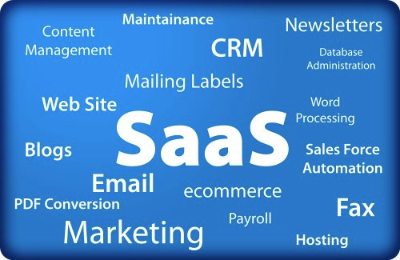SaaS and the age of global mobility: How 'suite' it is


Software-as-a-Service (SaaS) is one of the cloud technologies that allow businesses to go mobile and to go globally mobile. But, what users experience is that they have to learn a different application for each aspect of their jobs: accounting, resource planning, customer relationship management, timekeeping, and expense management.
Who can possibly become competent at all these different applications? It’s no wonder employees are so frustrated and inefficient at keeping track of expenses, time, and the other administrative bits of their jobs.
From my experience as a computer consultant, business owners and users alike want a one-stop experience* for their critical business applications.
Product suites work well together because the individual components share common controls, common “personalities”, and common idiosyncrasies. It just makes sense to purchase a suite such as Microsoft Office rather than to buy a word processor, a spreadsheet, a presentation application, a desktop database, and other separate components all from different companies. There are full SaaS suites available out there; NetSuite for example, provides all of the major business functions in one product collection.
Speaking of Microsoft Office, even Microsoft has web-enabled its Office suite SaaS style. The other issue plaguing businesses that want to go mobile, global, or both is that so many of their key applications reside in their own datacenters. That isn’t a problem if your workforce only operates during standard U.S. business hours. But what if your business has a ‘follow the sun’ scope or has offices in every time zone around the world?
When do you schedule maintenance on systems in your own datacenters? Remember that all 52 Patch Tuesdays, security updates, random patches like Heartbleed, BIOS updates, and driver updates are going to make it difficult to keep those on-premise applications up and running 24x7x365.
I know that a lot of you don’t like public cloud services because of security, privacy, and the larger network attack vectors that cloud services seem to attract. Every business has risk and you have to weigh that risk compared to the risk of not being mobile or not being global in scope.
SaaS is a great solution for those businesses progressive enough to have bring your own device (BYOD) programs in place. Think about unobtrusive it is to not have to install corporate spyware onto your personal devices. Instead, you can just a browser or secure app to access information that’s available 24x7x365. That also beats the heck out of installing a “fat” client onto every system that accesses an application.
For those of you who read my posts, you also know that I’m a frugal guy and to me SaaS is a very frugal choice. The lower startup costs, the lower barriers to business entry, the faster deployment to users, the pay-as-you-go subscriptions, and the extremely low maintenance costs are too good to pass up, especially for startup businesses or those who want to dump the datacenter, get on with their own businesses and out of the IT business. And as I’ve written before, if you’re not in the IT business, then you shouldn’t be in the IT business.
I’m certainly not implying or suggesting that SaaS applications are right for everyone, but you’d be hard-pressed to identify a business that couldn’t benefit from the cost savings and lower staffing overhead required by on-premise software installations. If I were starting a business today, each employee would be required to have a smartphone, a tablet, and a laptop computer**. I’d supply access to cloud-based applications and cloud storage. I’d also pay for half of their service fees, device insurance, and maintenance costs for use of their personal devices.
My workforce would be mobile, agile, and cloud-enabled. Security would be first priority, but frugality and mobility would run a close tie for second place.
*I’m so convinced of the "one-stop" experience that I use an All-in-One printer. It faxes, it copies, it prints, and it phones. It doesn’t slice, dice or julienne, but if those options were available, I’d add them on to get the full capability suite.
**Or a super tablet as I wrote in, "The future of mobile computing: a phone, a mini tablet, and a super tablet".
Related Stories:
- Death of the office and rise of the telecommuter
- The future of mobile computing: a phone, a mini tablet, and a super tablet
- Is Microsoft's cloud view realistic?
- Urge to transform the business drives SaaS surge
- Microsoft is building a CRM cloud for U.S. government users
- A watchlist of cloud-centric services for small-biz CRM